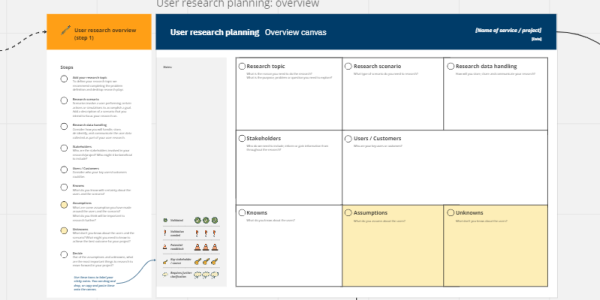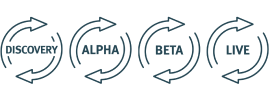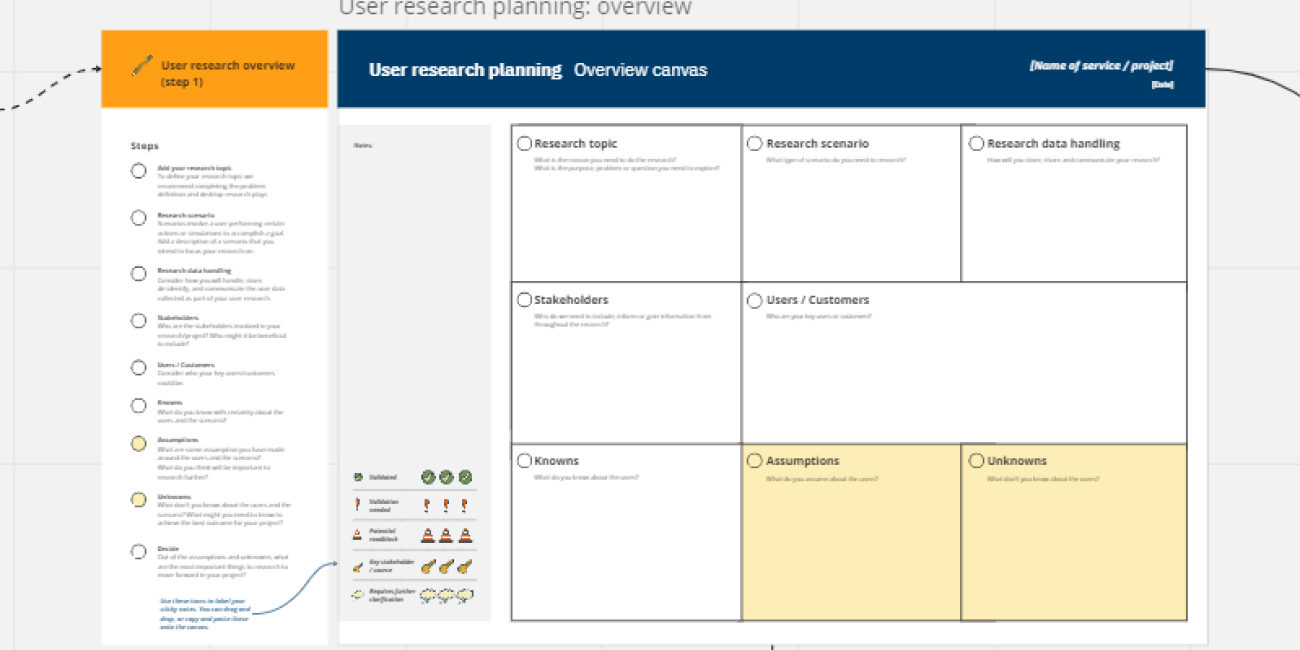User research planning
User research planning involves clarifying the details of your user research, identifying the appropriate research methods, and selecting the type of participants for the study.
By conducting user research planning early on, we can identify potential user needs, preferences, and pain points, as well as test assumptions and validate ideas. This can help save time and resources by identifying problems and addressing them before significant investments are made in design and development. Additionally, user research planning can help create a more focused and efficient research process, ensuring that research efforts are aligned with the project goals and objectives.
The best time to do user research planning in the Discovery stage of a project. This is because user research can inform design decisions and help ensure that the resulting product or service meets the needs and expectations of its intended users. However, as you develop hypotheses about user needs, you will have to revisit user research iteratively throughout the alpha, beta and live stages to ensure your solutions are effective for your users.

Outcomes
- Clear research objectives: User research planning helps in defining clear research objectives by identifying the research questions that need to be answered.
- Defined user segments: User research planning helps identify the user groups to target for the research. This helps ensure that the research is relevant and user-centred.
- Selected research methods: User research planning helps you select the most appropriate research methods for the defined artefacts you need for your project.
- Reduced risk: User research planning helps reduce the risk of creating products or services that do not meet user needs or expectations.
The stages

The four stages of the Service design and delivery process are Discovery, Alpha, Beta, and Live.
Digital service standard
This play helps your service meet the following criteria of the digital service standard.
Share your feedback
Take our short feedback survey and tell us what you thought of this play, or report an issue.
This playbook is a beta product, your feedback helps us improve it for everyone.
Contact us
If you need advice, mentoring, or guidance on how to use the playbook, or you’d like to contribute to the playbook, you can contact us.
